A Minor History Of / Time without Clocks
Do tell
Joshua Foer
“A Minor History Of,” a column by Joshua Foer, investigates an overlooked cultural phenomenon using a timeline.
The digital wristwatch counts time’s passage in the oscillations of a quartz crystal; the atomic clock tallies the resonance of cesium atoms; the pendulum clock, the hourglass, and the clepsydra all transform the force of gravity into a measurement of time. But while nature may mete out time’s passage in these horological devices, it takes human observation of the heavens to set them. Even the most precise atomic clock must be periodically tweaked to account for variations in the earth’s rotation. Some clocks, however, are tuned more directly to nature.
1500 BC
The first timekeeper is undoubtedly the gnomon, a vertical rod that casts its shadow on the ground. No one can be certain when the stick was first transformed into a sundial; however, records surviving from the reign of the Egyptian pharaoh Thutmosis III suggest that he carried with him a portable dial which presumably resembled a T-shaped stick that archeologists have discovered and dated to the same period.
13TH CENTURY
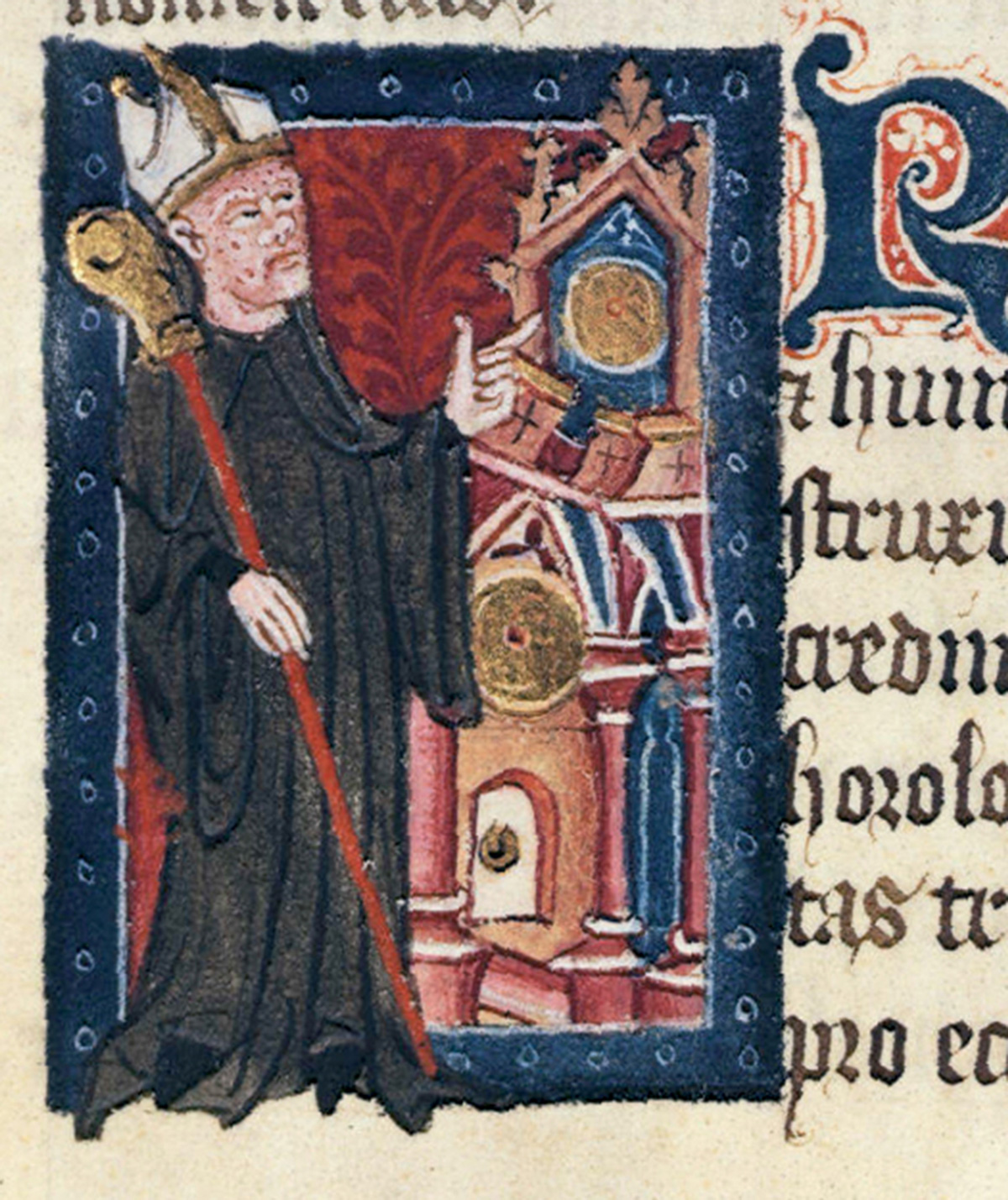
The first European tide-table, measuring the “flod at London brigge,” is created by Abbott John of Wallingford. The thirty-column chart, now in the British Museum, measures the height of the river Thames throughout the day, and as it cycles through the lunar month. Though Abbott John’s table is intended to aid ships by calculating the tidal height for any given hour, it can also be used in reverse to turn the tidal markings on the bank walls of the Thames into a makeshift clock.
1551
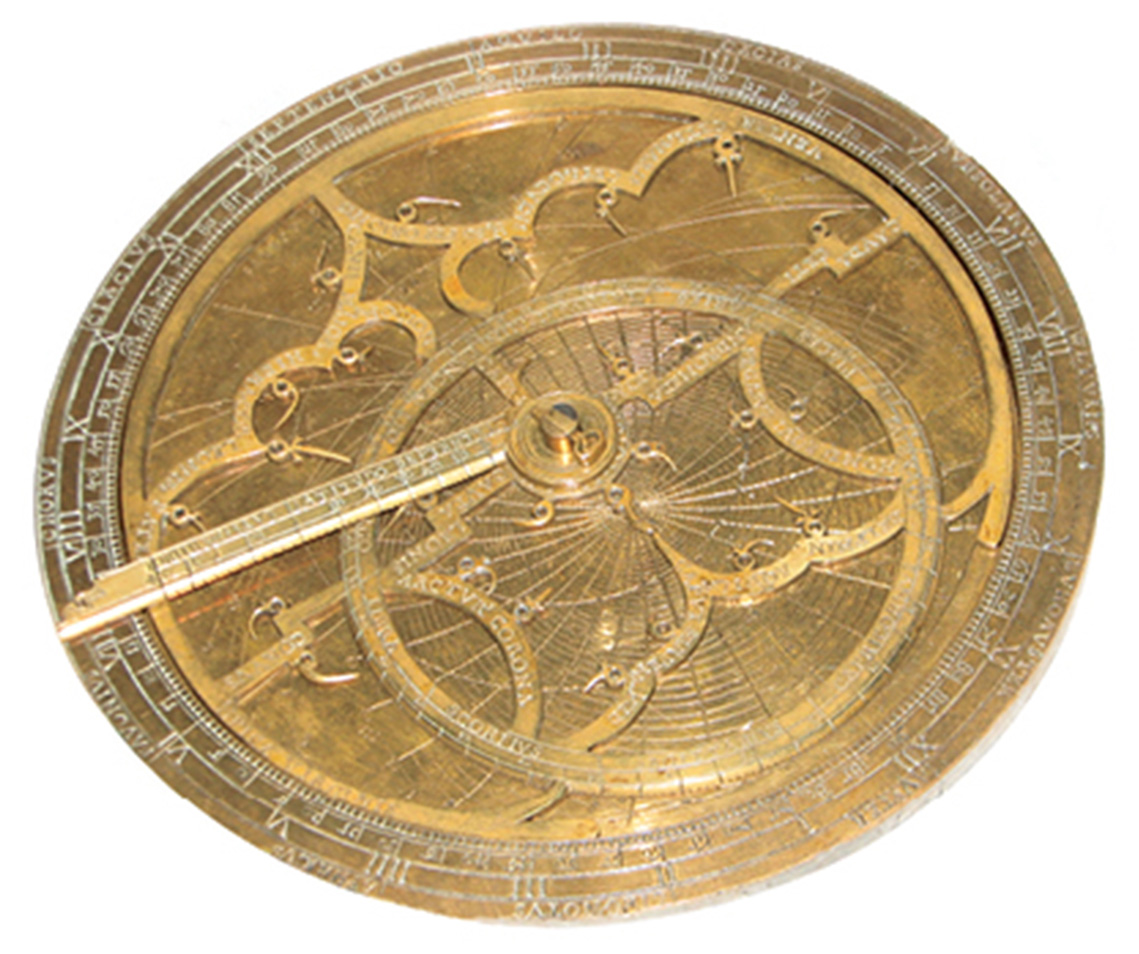
Of the sundial’s many practical shortcomings, the most glaring is the fact that it is serviceable for only half the day. In order to calculate “solar time” after the setting of the sun, more complicated instruments like the astrolabe are required. A simplified night “star clock” called the horologium nocturnum, or nocturlabe, is first mentioned in a book on the art of navigation by the Spanish cosmographer Martín Cortés de Albacar. The wheel-like device is a kind of analogue computer operated by sighting the position of a well-known constellation relative to the North Star and then twisting an inner dial to the appropriate date in order to reveal the hour.
17TH CENTURY
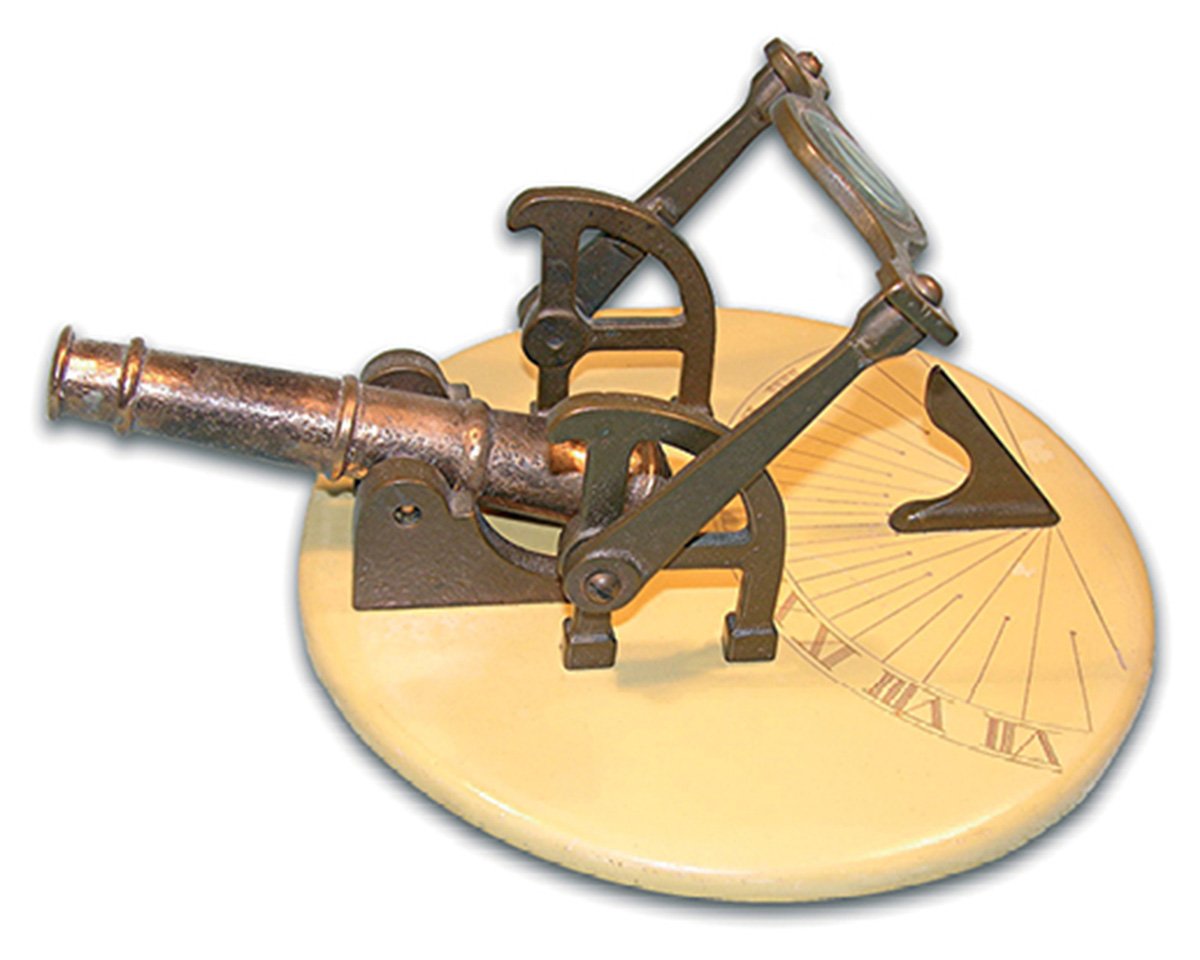
The cannon dial, also known as the noonday gun, is the first natural timekeeper with an alarm setting. It consists of a small cannon and a lens mounted on a horizontal dial. As the sun passes through high noon, its rays are concentrated through the precisely positioned magnifier, igniting a small amount of gunpowder and setting off the gun. (Courtesy David Ross, Cannon-Mania)
1614
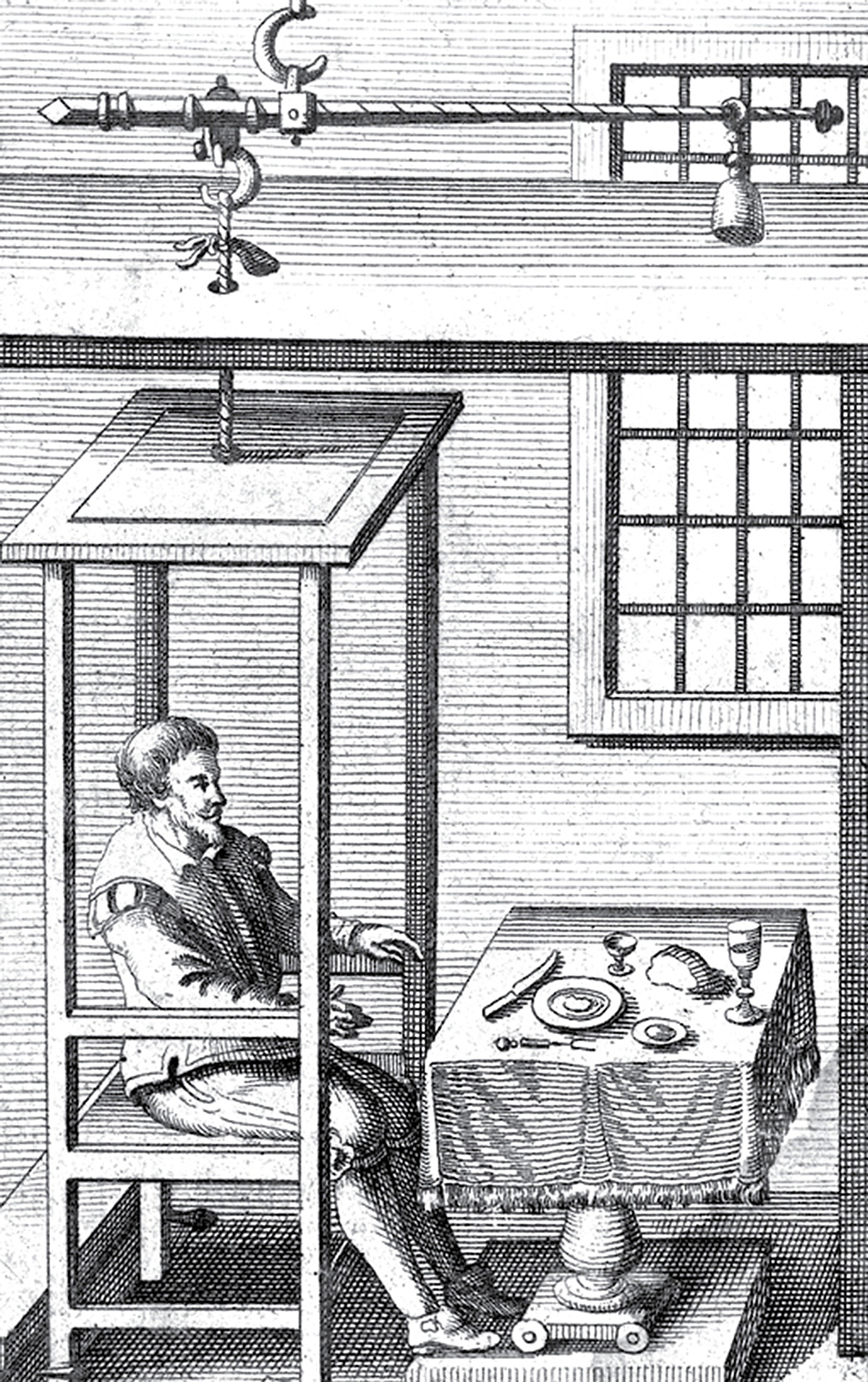
The Paduan physician Santorio Sanctorius spends the better part of thirty years eating, sleeping, working, and making love in a specially constructed “statical chair” that is attached through his ceiling to the arm of a finely calibrated balance. His scientific mission: to weigh precisely all of the food and liquid he consumes as well as the “sensible discharges” excreted by his body. Subtracting one from the other, he is able to calculate his “insensible perspiration,” the weight lost through the pores and during respiration. By taking measurements while fasting, Sanctorius determines that the average invisible excretion over the course of a day is 1.25kg—greater than the total loss through the more malodorous visible excretions. In addition to laying the foundation for the science of metabolism, Sanctorius’s ingenious experiment is also the first to discover that the human body operates according to a set of daily and monthly rhythms, proof that there is a clock inside each and every person. (Courtesy the Science Museum / Science & Society Picture Library)
1633
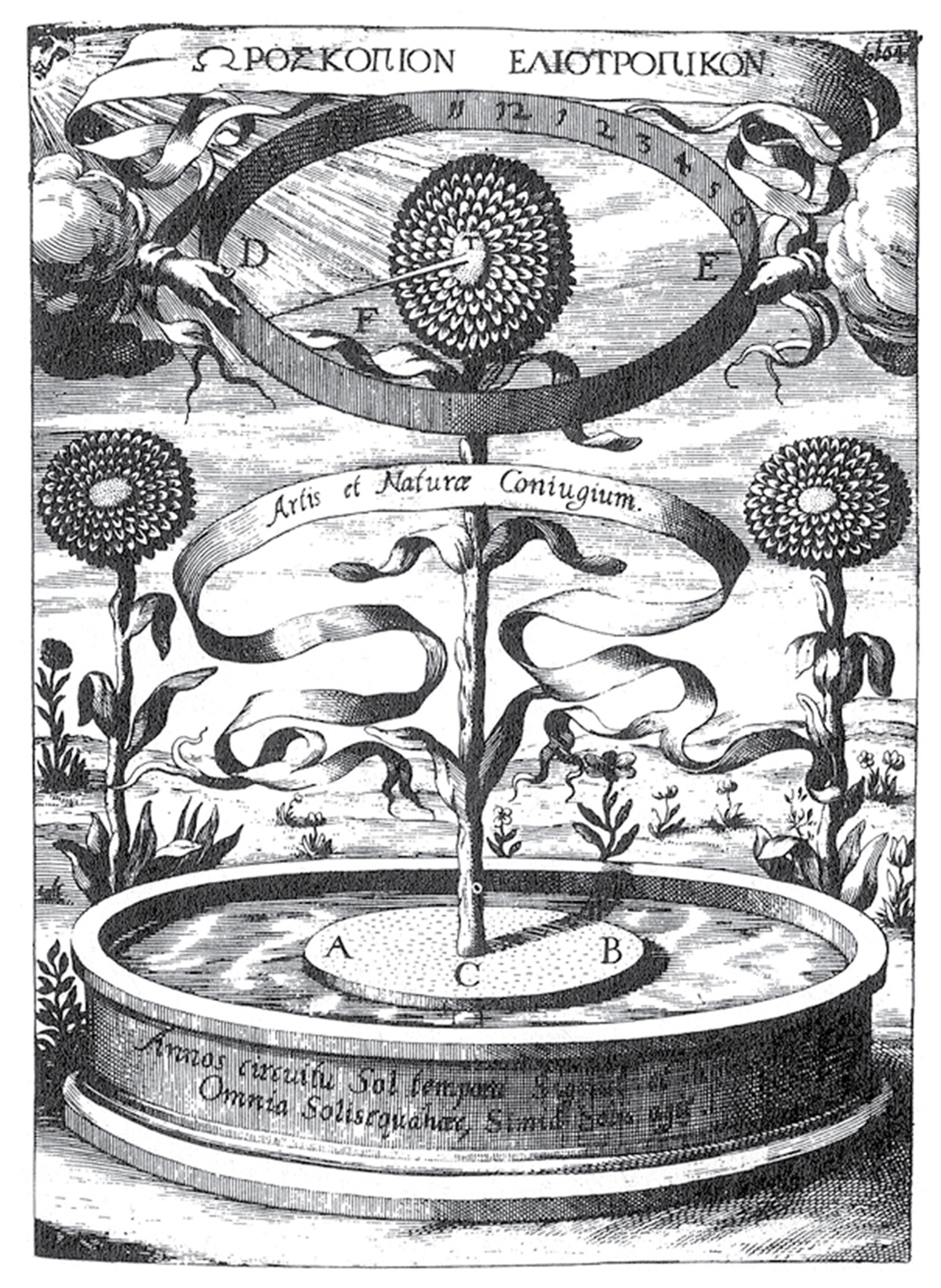
The Jesuit polymath Athanasius Kircher designs a “sunflower clock” that takes advantage of the blossom’s natural heliotropism, or tendency to turn towards the sun as it moves across the daytime sky. Kircher’s sunflower floats on a piece of cork and has a needle embedded in its stem that points to the hour. After watching a demonstration of the clock, the French astronomer Nicolas-Claude Fabri de Peiresc rightly concludes that it turns not by the force of the sun, but by an artfully concealed magnet. (Courtesy Museum of Jurassic Technology)
1728
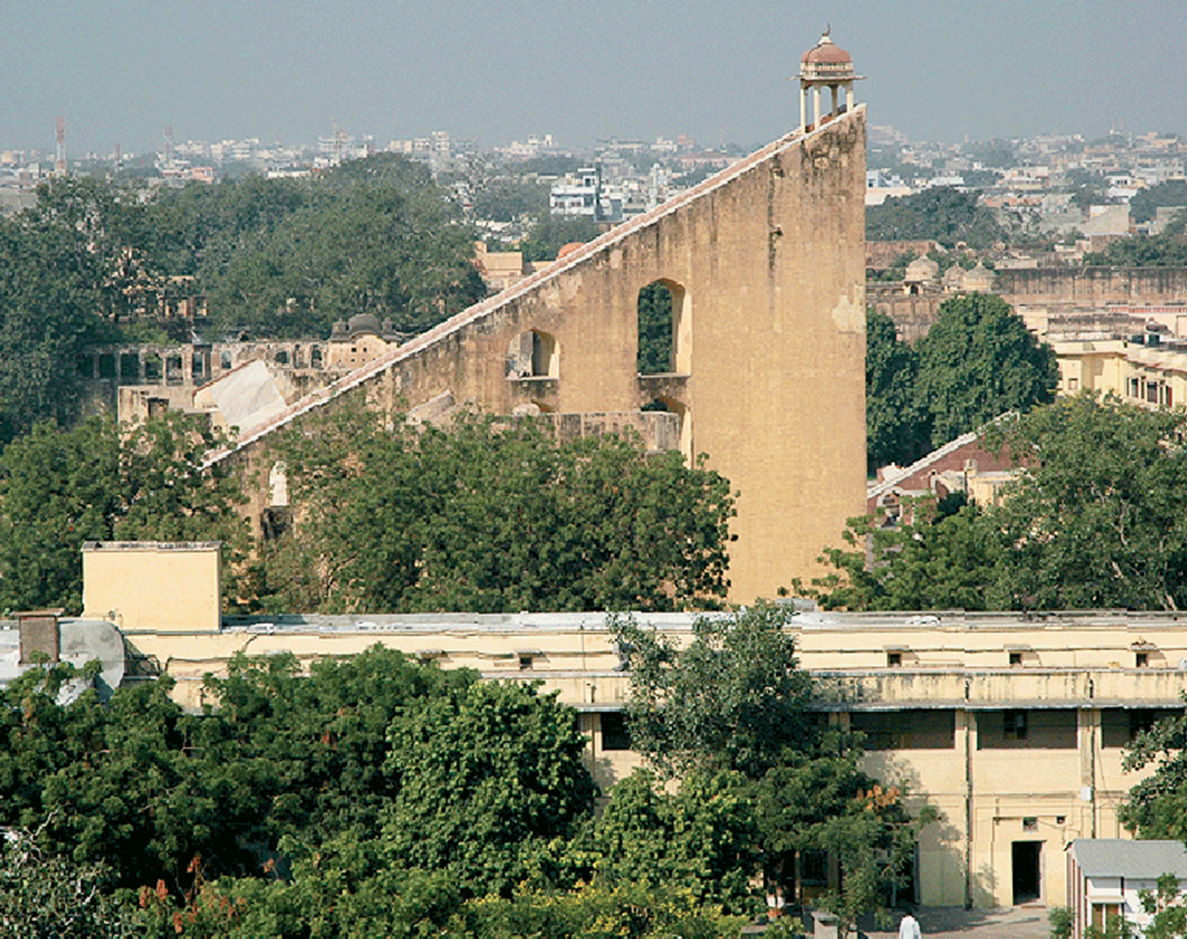
Sawai Jai Singh II, rajah of Jaipur, orders the construction of the Jantar Mantar complex, a monumental astronomical observatory built entirely out of mortar and stone. Among the observatory’s eighteen colossal instruments is the Samrat Yantra, a ninety-foot-tall sundial that is the largest ever built. Though similar in design to other dials of the day, it is far and away the most accurate. In fact, its two-second interval markings made it one of the most precise timepieces then in existence.
1733
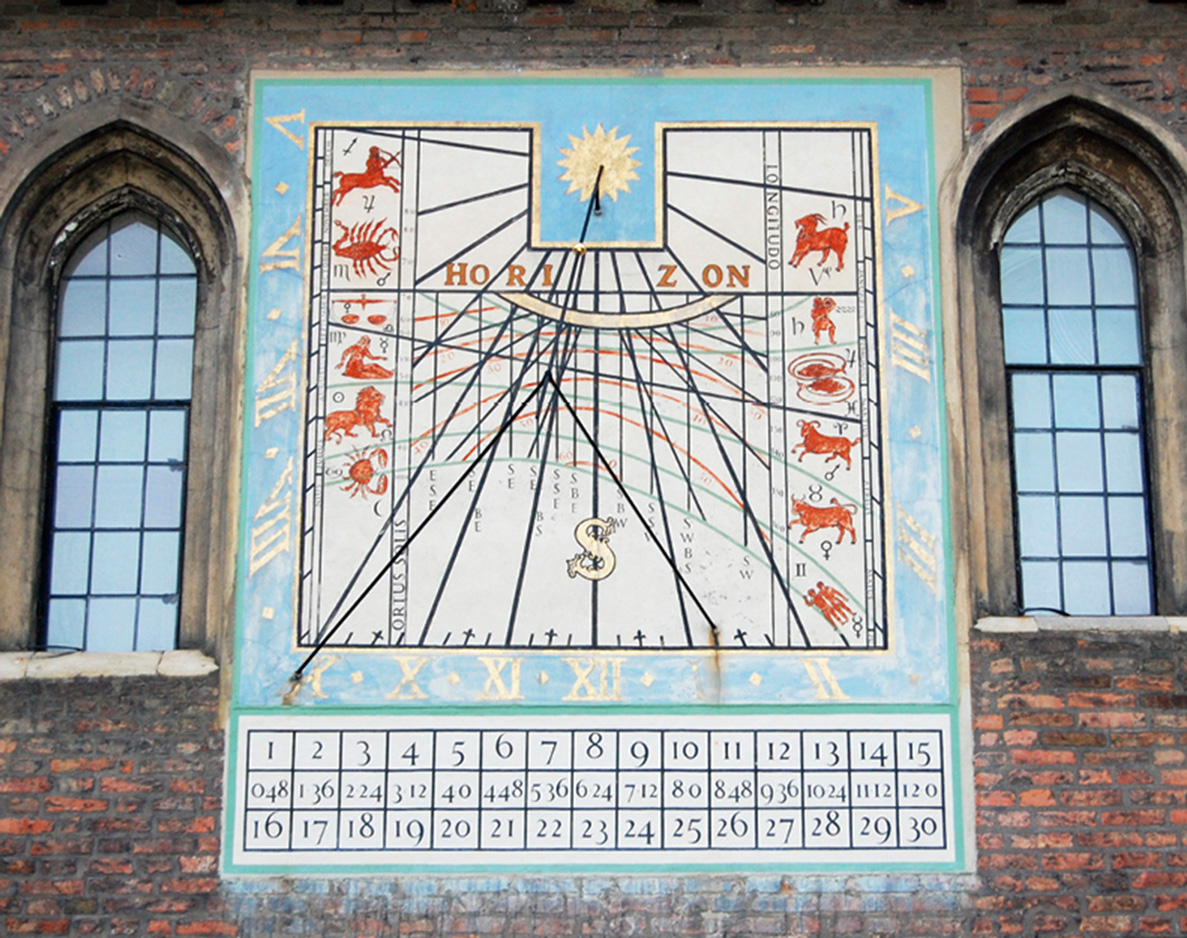
The celebrated Queens’ College Moon Dial, often erroneously attributed to Isaac Newton, is painted on an exterior wall at Cambridge University. In addition to the traditional solar hours, the timepiece has an accompanying table that can be used to read the shadow cast by the moon. Even with the table, however, a series of four mathematical calculations has to be carried out by anyone wishing to know the time. “The moon’s motion is so irregular that no moon-dial can possibly be accurate, and is to be regarded as providing an exercise in mental arithmetic rather than being an instrument of any practical value,” writes the mathematician Geoffrey Colin Shephard. (Photo Jeremy Kessler, 2008.)
1751
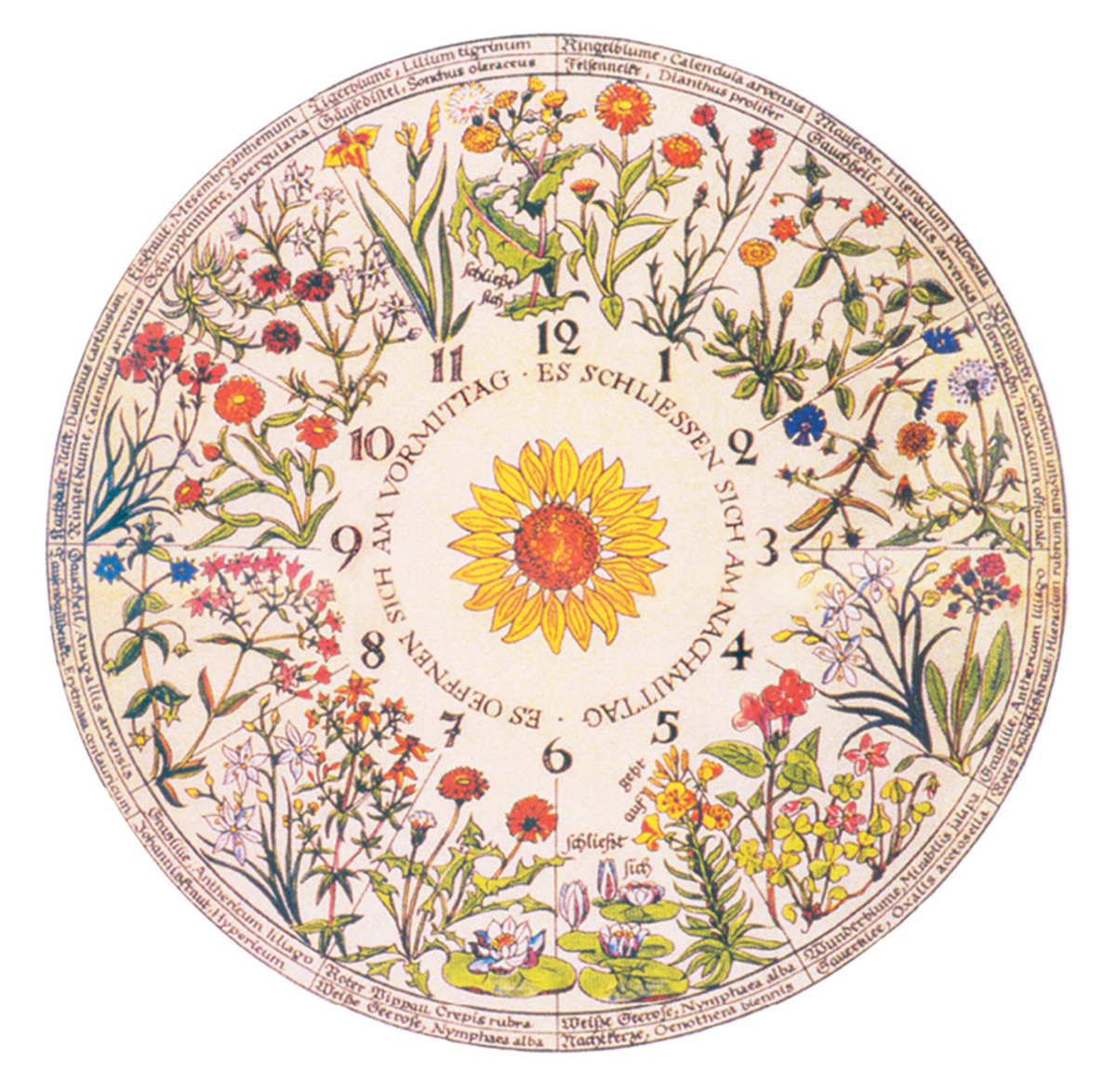
Carl Linnaeus, father of taxonomy, divides the flowering plants into three groups: the meteorici, which change their opening and closing times according to the weather conditions; the tropici, which change their opening and closing times according to the length of the day; and the aequinoctales, which have fixed opening and closing times, regardless of weather or season. Linnaeus notes in his Philosophia Botanica that if one possessed a sufficiently large variety of aequinoctal species, it would be possible to tell time simply by observing the daily opening and closing of flowers. He comments, to the consternation of several local horologists, that his floral clock is so accurate that it “could put all the watchmakers in Sweden out of business.” Though Linneaus seems never to have actually planted an horologium florae, or flower clock, his plan is later taken up with great passion by a handful of nineteenth-century gardeners, who often arrange a dozen or more species in the manner of a circular clock face.
1862
The Horological Journal, the organ of the British Horological Institute, reports the invention of an “ornithological clock” by an anonymous “German woodsman.” The clock takes advantage of the fact that certain species of songbirds are known to begin their songs consistently and precisely at set hours of the morning. Though the report is hazy in its details, it does tell us a few of the species engaged in this timekeeper: the green chaffinch (“the earliest riser among all the feathered tribes”) sings from 1 to 2 a.m., followed by the black cap from 2 to 3:30, the hedge sparrow from 2:30 to 3, the blackbird from 3:30 to 4, the lark from 4 to 4:30, the black-headed titmouse from 4:30 to 5:00, and finally the sparrow, which chirrups from 5 to 5:30 in the morning.
1887
During the same lectures to the Royal Society of London in which he first describes the condition known as Down’s Syndrome, the psychologist John Langdon Down also calls the scientific world’s attention to another disorder: Savant Syndrome. Among the ten original Earlswood asylum “idiot savants” that Down mentions in his speech is a seventeen-year-old patient who has a perfect appreciation of time’s passage without reference to a clock or even knowledge of how to read one. Since Down’s original description, a handful of other time savants have been described in the medical literature, including a blind musical savant named Ellen currently living in California, whose gift, according to the psychologist Darold Treffert, “was discovered one day when her mother let her listen to the ‘time lady’ on the telephone. After listening for a short while to the recorded voice intone the hour and seconds, Ellen apparently set her own internal clock. Since then, she has been able to tell what time it is to the second, no matter the season.”
1929
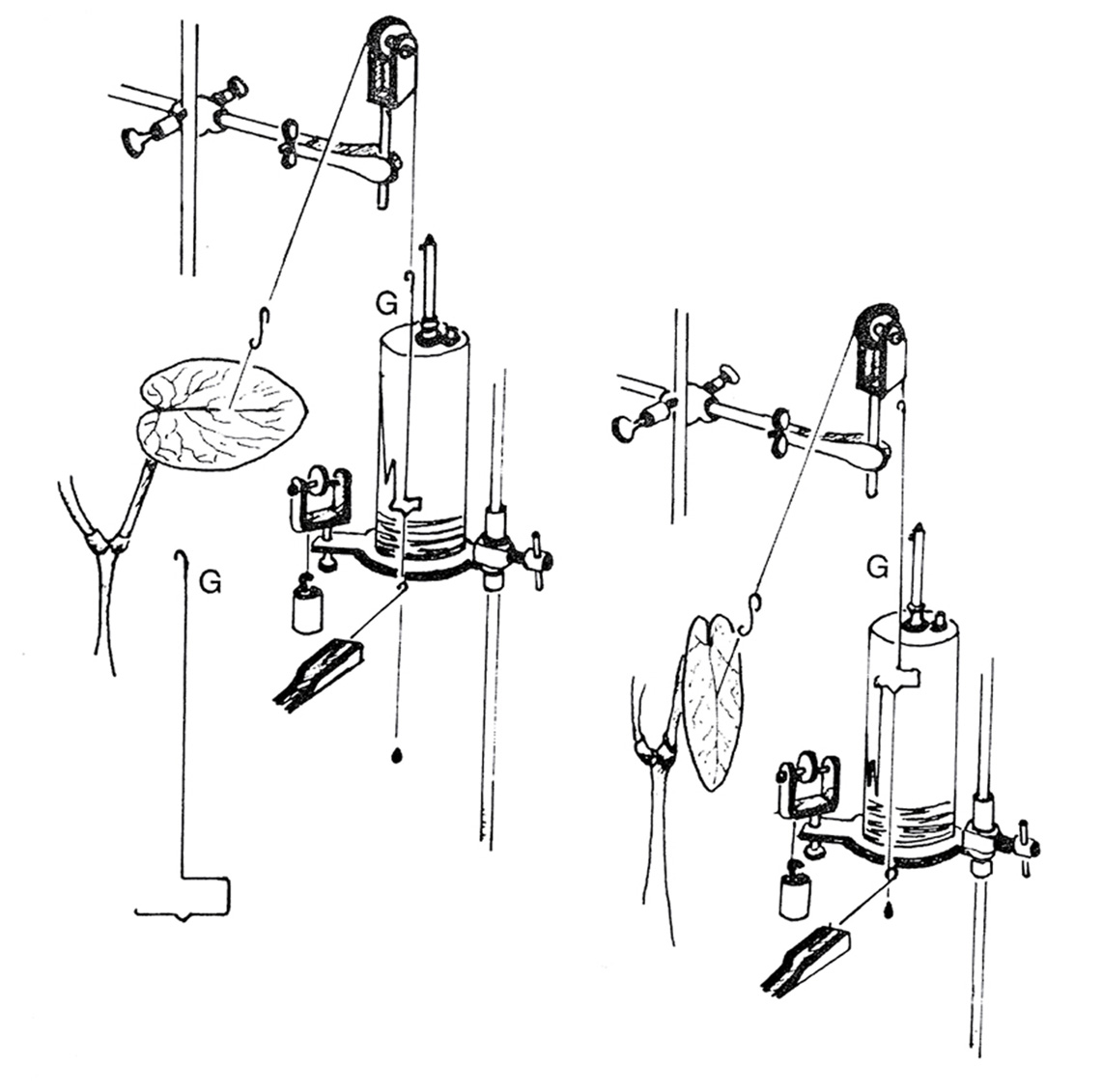
Dutch botanist Anthonia Kleinhoonte employs a measuring device known as the “aktograph” to precisely record the rhythms of a bean leaf’s movement throughout the day. A thin filament attached to the leaf is connected to a stylus, which draws on a revolving smoke drum. As the leaf rises in midday, so too does a line rise on the drum, only falling back as the leaf begins to slump in the evening. Kleinhoonte’s measurements demonstrate that the plant lives according to a strict daily rhythm. Though it was not apparently Kleinhoonte’s intention, her device can be seen as the first working model of Kircher’s sunflower clock.
1929
Ethologists Ines Beling and Karl von Frisch discover that common honeybees can be trained to arrive at a feeding site at specific times of the day, suggesting for the first time the possibility of an apian clock that would make use of a collection of bee populations trained to feed at different hours. Thirty years later, Max Renner sets up a pair of identical bee feeding rooms in Paris and New York, with the aim of finding out whether the bees calculate their feeding times based on external clues from the sun, or an internal clock. Renner trains forty bees in Paris to feed at exactly 8:15 p.m. and then transports them across the Atlantic via airplane. The next day, in their New York room, the bees come to their feeding station at exactly 8:15 p.m.—Paris time.
1972
French speleologist and sleep researcher Michel Siffre kisses his wife goodbye and then descends a 100-foot vertical shaft into Midnight Cave in Texas. He remains there alone for 177 days, isolated from the sun and without access to a clock, sleeping only when his body tells him to. On the thirty-seventh day of the Midnight Cave experiment, Siffre undergoes a strange physiological shift known as “spontaneous internal desynchronization.” Without his realizing it, his schedule becomes wildly erratic. Some days last as long as fifty-two hours, others as short as sixteen. It seems entirely random, though it isn’t. In fact, his body’s temperature cycle and sleep cycle, normally aligned, have become unlinked, causing his life to be governed by two competing internal clocks.
1998
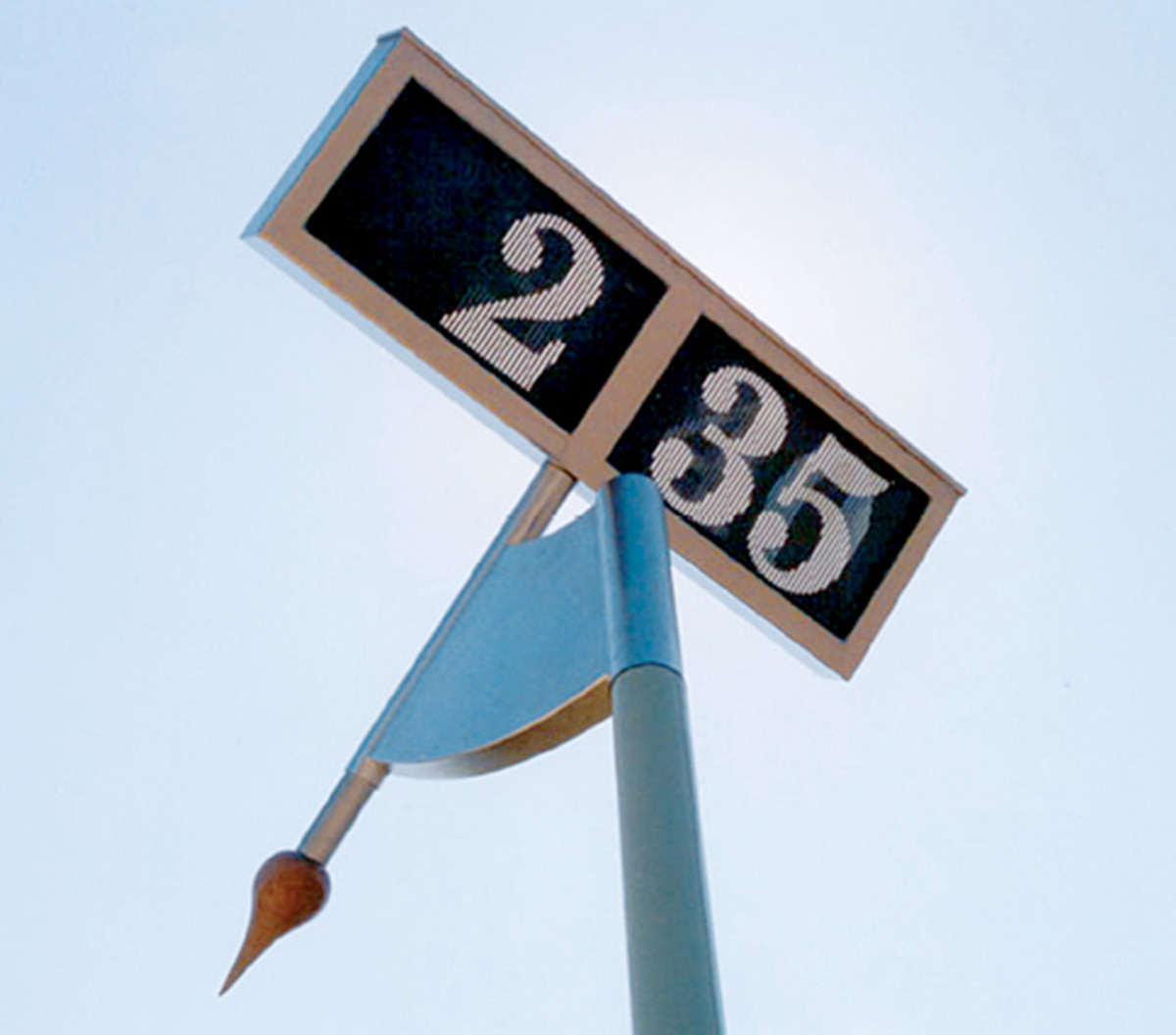
The world’s first digital sundial, inspired by a theorem first proposed by the mathematician Kenneth Falconer, is installed in a sundial park in Genk, Belgium. The creation of a trio of German inventors, the timepiece displays the hour and minute just as any standard digital clock would. However, it is entirely passive, and uses no electricity. Instead, the clock takes advantage of an ingenious masking system that translates the angle of the sun into digits.
2012

The Aluna Project, an illuminated forty-meter-wide glass-and-steel lunar clock powered by the tides of the Thames, is set to begin keeping time in London just before the summer Olympics. Promising to be a “twenty-first-century Stonehenge,” the clock will actually extend the day by fifty minutes because of the discrepancy between lunar and solar time—the problem that first led Abbot John of Wallingford to create his thirteenth-century tidal table. (Courtesy Aluna Limited. Image Mark Glean)
“A Minor History Of / Time without Clocks” was featured in the New York Times and reprinted in Time, a volume in Whitechapel Gallery’s “Documents of Contemporary Art” series.
Joshua Foer is a freelance science writer. He is working on a book about the art and science of memory, forthcoming from Penguin.